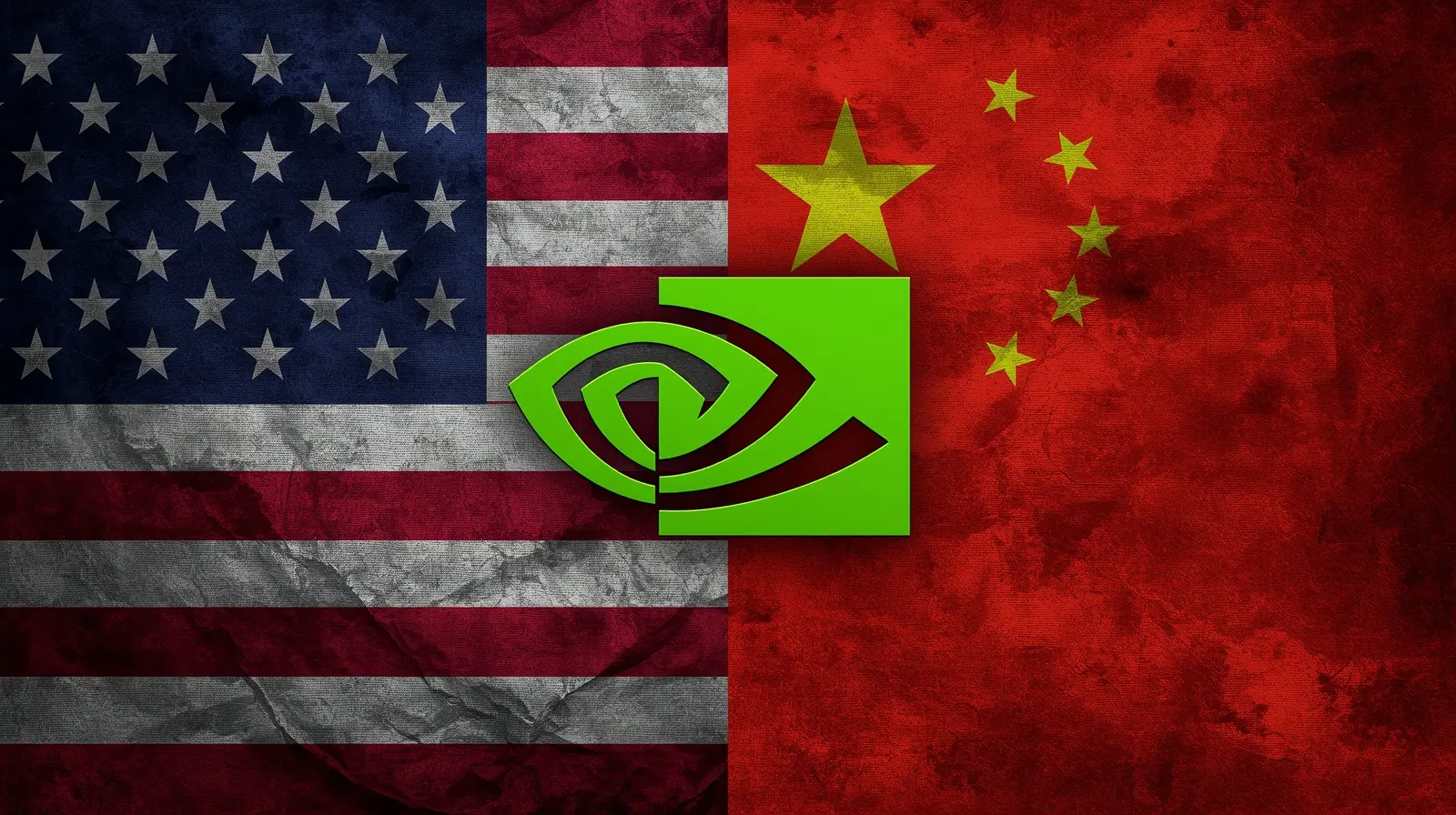China’s Bold Bid to Challenge Nvidia Chips
Nvidia chips have been at the center of the global AI and high-performance computing ecosystems for over twenty years. AI training, inference, and GPU-based systems are dominated by Nvidia. However, China is attempting to invest heavily in AI and dethrone Nvidia. China is heavily investing in AI, chip design, semiconductor manufacturing, and ecosystems to dethrone Nvidia, or at the very least, reduce Nvidia’s grip over one of the most strategically important industries in the world.
This blog discusses the implications of China’s investments, China’s advancements in chip technology, Challenges that China faces in the semiconductor industry as well as the implications of these challenges for the global chip industry and most importantly, how Nvidia’s dominance may be challenged in the years to come.
1. Why Nvidia Chips Became the Standard
Before we analyze how China is attempting to unseat Nvidia, we first need to understand how Nvidia chips became a dominant player in the industry.
1.1 GPU architecture & CUDA ecosystem
Nvidia is not successful due to only one piece of the AI ecosystem. The reason Nvidia’s chips stand out is due to having a complete and comprehensive suite of software architecture which the company was the first to develop. That combination of software and silicon is Nvidia’s primary advantage.
Nvidia chips have benefited, within the course of their lifetime, from a surrounding ecosystem which includes a multitude of tool chains, software libraries, communities of developers, and more. These communities and developer tools not only help platform ecosystem improve but help it expand. This ecosystem has, of course, become a protective moat and made it very hard for newcomers to gain meaningful traction.
New competitors hoping to validate their worth must not only construct Nvidia competitors but also develop a software ecosystem, which may take several years. In this scenario, the advancements and capabilities of the CUDA platform are what keeps Nvidia chips as the industry benchmark for artificial intelligence training and inferencing.
1.2 Early Investment & Scale
Nvidia made early and aggressive investments to optimize GPUs for parallel processing. It pioneered tensor cores, mixed-precision algorithms, memory bandwidth, and processing interconnects. The lower cost of training AI, scaling cloud infrastructure, and building data centers also made cloud services affordable and easy to integrate, improving performance and developer adoption.
1.3 The AI Arms Race & Network Effects
When Nvidia GPUs became the primary processor for AI Cloud Services, it became almost impossible for other companies to enter the market. Nvidia chips were the assumed hardware for the majority of research software, frameworks, and innovative AI tools, creating a self-reinforcing loop of dominance.
Today, the bulk of the world’s AI systems operate on Nvidia infrastructure. The question is, can China break that dominance?
China’s Strategic Push: Ambitions & Moves
China’s approach to challenging Nvidia chips is not an abstract thought. It is a fully coordinated plan involving the state’s policies, resources, and industrial strategy. The following are the top efforts from China in this regard:
DeepSeek & a Wake-Up Call
In the year 2024, DeepSeek, a newcomer to the world of AI, shook the market by announcing a competitor to ChatGPT. DeepSeek announced a new AI Chatbot and the steep market valuation of Nvidia screamed the AI competitor was trained on less expensive and less AI chips. Given the market’s volatility, Nvidia’s stock lowered in valuation and raised alarm in the market.
DeepSeek made clear that Chinese AI industries, have made shifts from being passive consumers of nvidia chips to active innovation and, more importantly, exploring ways to break free from their dependence on Nvidia.
Chinese Tech Giants Step In
Major companies from China are quite interested in AI and chip technology. Alibaba made a new AI chip that claims to rival Nvidia’s H20 and even made Natural Language Processing (NLP) chips that rival and outperform Nvidia’s in power consumption.
Moreover, Huawei claims to be leading the AI sector by driving the continuous development of AI chips that seek to rival Nvidia’s chips to reduce dependency on foreign chips. Also, Shanghai’s Cambricon Technologies has seen stock prices go up by more than 100% due to the new chip policies in China.
Tencent, the parent company of the well-known WeChat app, has partnered with the government to develop local chips in an effort to replace Nvidia chips in China.
These facts illustrate that the competition to nvidia chips is no longer just a talking game, for Chinese companies are actively mobilizing to exercise competition.
State support, Industrial Strategy, and Market Pressure.
The Chinese government is applying pressure and triggering competition in many ways, including:
Chips in China: Procurement mandates that encourage, or even require, Chinese chips for AI and infrastructure projects.
Marketing Uniqueness: Chinese chip capabilities are showcased at promotional trade shows to lure customers and investors.
Investigations: To investigate Anti Monopolies by foreign companies, such as Nvidia. Chinese government provides administrative pressure to curb foreign companies monopoly over the Chinese market.
Steve Jobs: By flexing its new chip technologies, China is claiming sovereign technological advancement in international trade negotiations over the US
These government-led mechanisms promote competition and scale integration, which is consolidation, in China, something private companies in other countries don’t have.
Technical Progress & Skepticism: How Far Has China Actually Come?
China hasn’t claimed to have fully overtaken Nvidia chips; instead the claim is China is getting closer. But what do the data and expert analyses say?
3.1 Some positive report but with caveats
A peer-reviewed study in China showed that domestic GPUs, with optimized software, surpassed US-based supercomputers in some scientific simulation workloads, even to the order of 10x on some workloads.
South China Morning Post
There are ambitious efforts on the part of Huawei. The Ascend 910C and the expected supernodes Atlas of the future promise seamless interconnect and high-performance scaling with thousands of chips.
The Indian Express
Chinese announcements are filled with claims surrounding the energy efficiency of their designs, claims of competitive performance, and improvements within the design if memory and architecture.
Spanish computer scientist Jawad Haj-Yahya, says some Chinese chips do perform comparably in predictive AI workloads but falter in advanced analytics, generalized tasks, and several complex analytics.
Lastly, Chinese state and private research on AI, especially its application to commercialization, is still behind the world. Obtaining the resources to manufacture advanced chips at scale, Extreme Ultraviolet Lithography and high precision semiconductor manufacturing, is still a major issue.
In short, China is making advancements and closing some gaps, but Nvidia chips are still dominant in the top-tier sectors and are not an immediate threat.
3.2 Manufacturing bottlenecks & supply chain constraints
SMIC, China’s domestic foundry, is making progress, especially in the more mature technologies like 14nm and 7nm chips. However, he still significantly lags behind TSMC and Samsung in the more advanced 3nm and 5nm nodes. Additionally, U.S. export restrictions further limit access to crucial tools and supplies.
Most Chinese chip designers depend on foundries, so the lack of manufacturing capabilities is a bottleneck on how aggressive the performance of the chips could be.
3.3 Software ecosystem & developer inertia
Chinese chips could have comparable or superior specifications, but gaining the market to replace Nvidia chips will only be achieved by convincing customers, and more specifically, the developers to change. This entails rewriting software, porting models, reoptimizing libraries, stabilizing the toolchain, and so on. This is no small task. There are significant risks tied to such changes, and many organizations are unwilling to take that risk.
China’s closed market may make this easier with state-led projects or mandates, but globally, developer acceptance is a different and significantly more challenging problem.
4. Recent Escalations in the Chip Rivalry
- Policy actions and Chi- 4.1 By 2022’s end, the Us formally restricted Nvidia advanced chips exports over begun exports restriction to Nvidia advanced chips over and China imposed exports restriction to Nvidia advanced chips.
4.1 By 2022’s end, the Us formally restricted advanced Nvidia chips exports to China.
4.1 Starting August 2025, China urged domestic firms and state actors to prohibit the use of the Nvidia H20 in any government or security functions.
By July 2025, the Cyberspace Administration of China (CAC) instructed major technology firms to cease the use, and orders, of certain Nvidia chips (like the RTX Pro 6000D) and circuits.
4.1 In July 2025, China summoned Nvidia over alleged “backdoor” risks in its chips–claims Nvidia strongly denied.
4.1 China is retaliating, along the lines of aggressive regulatory posturing, retaliating to Nvidia investigations of domestic monopolistic practices.
These moves show that the chip rivalry is bridging from technical competition into economic and regulatory warfare.
4.2 Volume Goals
China plans to produce 3 times the amount of AI chips by 2026 to ease dependence on Nvidia and similar foreign providers.
Huawei intends to build new facilities to manufacture chips that will cater to future Ascend devices.
Huawei is a key client for SMIC, who is trying to increase 7 nm production.reports
Should China achieve these objectives, it will interdict Nvidia’s supply-side dominance.
4.3 Demand for Nvidia Chips Continues to Grow
China, despite the regulations, is still eager to acquire Nvidia chips, specifically the H20. Following the AI break through by DeepSeek, Nvidia chips orders by Chinese companies skyrocketed.
Nvidia placed an order for 300,000 H20 chips to TSMC to which was intended for the expanding demand in the mid 2025.
However, the license for exports is still uncertain which controls the Nvidia shipments. This shows the reluctance of Nvidia to step over the limit of US regulations, despite the demand.
5. The Future
The future is uncertain, and that is applicable to almost every aspect—from policies and technological advances to challenges in the market.
5.1 China gradually displaces Nvidia in its domestic market
In the short to medium term, China will likely begin to substitute Nvidia chips with domestic alternatives, such as those produced by Huawei, Ascend, Cambricon, and others. As the performance gap closes and developer support expands, government procurement policies will quicken the pace of this switch.
Nvidia will likely still have chips in China, but they could lose Nvidia’s China business and have to export to other regions.
5.2 Structural duel-ecosystem paradigms
In the short term, the more likely scenario is the creation of parallel ecosystems: one with Nvidia in the U.S. and allied markets, and the other with China and its own chips, software, and possibly decoupling. Global AI development may disintegrate, leaving the world as separate hardware and software silos.
5.3 Technological leaps or stunted growth
There is a chance one or more Chinese chipmakers will overtake Nvidia in specific areas due to breakthroughs in design, memory, and processing. In this case, Nvidia chips will face challenges, and headwinds in other markets.
Or, China may export chips to keep lower-tier markets and use branded chips for domestic customers. In this scenario, China will keep many projects active, and Nvidia will dominate the market without contention.
5.4 Changes in US Policy and World Order
The US approach to export policies and trade negotiations will also influence the pace of the developments in relations with China. Nvidia’s management needs to be very careful; overly aggressive entrance to the Chinese market will face backlash and the potential for stiff regulation, while overly conservative management will allow China to gain the dominant position irreversibly.
6. Global Implications
China’s opposition to the use of Nvidia chips has consequences beyond the Asian continent.
Global infrastructure for AI may be more fragmented than before. China can grow its own, in-country, ecosystem of chips and other AI tools and the tools will have cross-border use restrictions. Valuable AI tools will have gaps in performance based on where they are used.
The global supply chain for semiconductors is under pressure. The trade realignment around semiconductors will lead to increased supply chain pressures for equipment makers, materials suppliers, and fabs.
The ability to control advanced AI tools is an asset in world politics. The source of chips will determine who has power over the use of the AI tools.
Competition on the use of AI will drive more advanced innovations in the architecture of computer memory, more advanced chip designs, and more functional software.
The use of AI will be distinctly easier if there are several hardware systems to choose from. AI startups will be more able to choose a hardware platform and reduce their risk of dependence on Nvidia.Challenges China Must Overcome
In order for China to successfully compete with Nvidia chips, multiple complex issues must be addressed:
Scaling advanced manufacturing — Restrictions on exports limit China’s access to advanced manufacturing, state-of-the art lithography, and extreme-ultraviolet (EUV) tools.
Benchmarking and transparency — External validators have to assess and evaluate performance assertions for varying tasks in order to achieve consistency.
Ecosystem development — There needs to be a comprehensive and supportive community structure around tools, libraries, debugging, profiling, and interoperability between multiple languages.
Defect rate and longevity — Hardware needs to be production-grade with adequate supply and stable longevity.
Global trust and adoption — External to China, users will be resistant to adopting internally produced chips unless they can prove competitive and secure.
An innovation culture and state direction — A centralized control system and state direction to balance innovation can be very complex.
Why Nvidia Still Has Advantages
In the face of relentless ambition from China, Nvidia still has chips with unsustainable strengths:
A well-established ecosystem and community among academic institutions, AI labs, and cloud providers.
Trustworthiness, consistency, and performance in a broad array of AI tasks.
Generations of strong IP protection and incremental enhancements.
Alliances in global markets, countering even the US’s export control policies.
For Chinese competitors, the challenge isn’t just about catching up on the technology it’s about overcoming those inherent advantages that have already been established.
Concluding Thoughts
Could this be classified as a thought experiment? Not the titled question—“How China is challenging Nvidia’s AI chip dominance”—which suggests a challenge that is already achieving state-supported, market-driven, and swiftly advancing technological capabilities that focus on China challenging Nvidia chips. Within that, it is critical to note that dominance is not easily discarded. Nvidia chips are still the most powerful chips in the world and the company still holds a considerable market dominance. It will most likely continue to have the upper hand due to geopolitical market and national-competitive tensions, evolving competitive landscapes, and emerging regulations.
Over the next five to ten years, a more fragmented AI hardware market dominated by geopolitical tensions and competitive landscapes is something we are likely to face. Whether the Nvidia chips remain the world standard, or just another high-powered option within a more competitive market, is the primary technological challenge of our time.
Table of Contents
Reference Website : https://www.bbc.com/news/articles/cgmz2vm3yv8o
Read More

5 Critical Lessons from the European Airport cyberattack That Brought Travel to a Standstill
A Morning of Chaos: Screens Go Dark Across Europe Imagine it’s Saturday morning. You’ve been saving for this vacation for months. You arrive at the airport, suitcase in tow, excitement…
7 Astounding Reasons Why Gliese 12 b Could Be Our Cosmic Twin (And How We’ll Know Soon)
Beyond a Pale Blue Dot: The Breathtaking Discovery of Gliese 12 b and the Search for Our Galactic Neighbors For all of human history, gazing up at the starry canvas…

